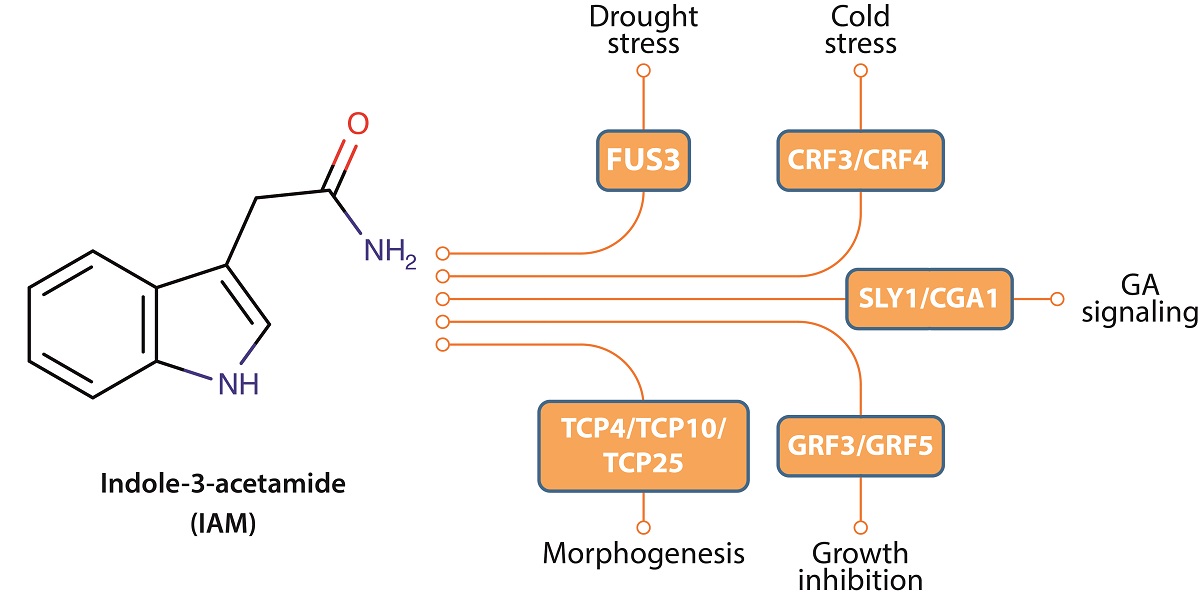The major auxin, indole-3-acetic acid (IAA), is associated with a plethora of growth and developmental processes including embryo development, expansion growth, cambial activity, and the induction of lateral root growth. Accumulation of the auxin precursor indole-3-acetamide (IAM) induces stress related processes by stimulating abscisic acid (ABA) biosynthesis. How IAM signaling is controlled is, at present, unclear. Here, we characterize an ami1/rooty double mutant, that we initially generated to study the metabolic and phenotypic consequences of a genetic blockade of the indole glucosinolate and IAM pathways in Arabidopsis thaliana. Our mass spectrometric analyses of the mutant revealed that the combination of the two mutations is not sufficient to fully prevent the conversion of IAM to IAA. The detected strong accumulation of IAM was, however, recognized to substantially impair seed development. We further show by genome-wide expression studies that the double mutant is broadly affected in its translational capacity, and that a small number of cell proliferation and plant growth regulating transcriptional circuits are repressed by the high IAM content in the seed. In accordance with the previously described growth reduction in response to elevated IAM levels, our data support the hypothesis that IAM is a growth repressing counterpart to IAA.

